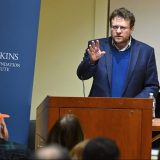Click here to read the report.
Pluralism is an important fundamental characteristic of healthy public spaces. Public spaces enable community both directly through the resources and services they provide (recreation space, books, information) and indirectly by providing vital connection points between community members. In that capacity, public spaces are instrumental to developing a community’s cohesion, trust, and ability to make collective decisions. For public spaces to effectively fulfill both their direct function and indirect connecting function, it is imperative they be used by and foster interaction between a diverse representation of the community.
The hallmark of digital communities, differentiated from transactional or informational websites, is that online communities involve such interactions between participants. These interactions define a network, with myriad factors that could characterize a healthy network. Healthy communities might involve robust participation, or positive interactions, or effective collective decision-making. None of these, however, distinguish between a community moving towards increasing inclusivity and integration and one tending towards narrowness and polarization. Knowing this requires a dynamic measure not only of the community as it stands or as it was conceived, but also of how a network is evolving. A community may begin as ideologically neutral or broadly inclusive, but become dominated by a narrow set of identities or perspectives.
For this reason, we focused our attention on understanding the ability of networks to sustain difference without domination and, specifically, on measuring pluralism dynamically within a digital space. A key early question we sought to understand was whether pluralism in a network was a function of the individuals in the network, of dyadic interactions between those members, or of the network itself.





